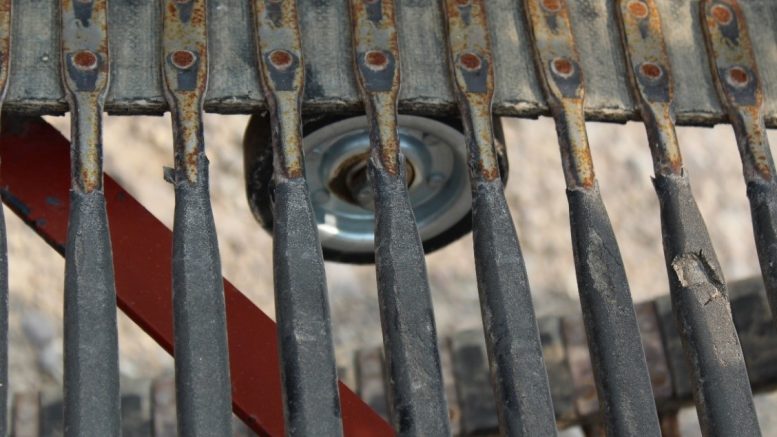|
Click to listen to this article
|
By Nora Olsen and Mike Thornton, University of Idaho
The bulk of harvest is just ahead of us, and here are a few reminders on operating equipment for handling the new crop. Regardless of how experienced at operating equipment, a few friendly reminders can always be helpful to minimize bruise. There are multiple and complex conditions that can cause a potato to bruise. Bruise research indicates major influencers of whether a potato will bruise or not includes variety susceptibility, tuber pulp temperature, and impact force. Lessening the physical impact on a potato is a tangible action that can be done by modifying how equipment is operated and replacing and updating padding and cushioning.
There are five 3-minute videos at the University of Idaho potato website: www.uidaho.edu/cals/potatoes/bruise-management/training-videos, which cover windrower operation, harvester operation, moving potatoes from the truck to piler, best practices for piling potatoes and unloading potatoes out of storage. All videos are in English and Spanish.
A few highlights to take away from the videos:
Windrower and harvester operation:
- Change tractor gears to speed up when soil load on the primary chain is too light, and slowdown in wet spots. Do not adjust the throttle as the change in rpm changes the conveyor speed relative to ground speed.
- If too few potatoes are on the rear cross, slow it down by adjusting the hydraulic motor.
- Make sure belting and/or cushioning material is attached to the back wall of the rear cross and check regularly that it is not caked with soil or damaged.
- Lower the discharge end of the rear cross as close to the furrow (windrower operation) or truck (harvester operation) as possible to minimize the drop height.
Moving potatoes from the truck to piler:
- Adjust stingers and other equipment as much as possible to minimize drops at transition points.
- Use padding, belting and cushioning as needed to decrease impacts.
- Assure there is a uniform flow of potatoes and match the conveyor speed to the volume of potatoes.
- Remove and discard rotten potatoes and all foreign material.
Piling potatoes into storage:
- Always make sure that air ducts are properly aligned, and seams are secured to promote good air distribution.
- Begin filling the storage along the back wall by completely covering the first line of pipe, and only after that start increasing the pile height in a stair-step fashion.
- Continually focus on keeping the end of the piler boom close to the pile to minimize bruising.
- Fill the storage to the height that matches the design capacity for the storage. Piling higher or lower than the intended capacity will change the air flow in the storage.
Finally, all harvesting equipment can take a beating after years of use. Replace worn parts, belting, padding, and flights to minimize bruising.

